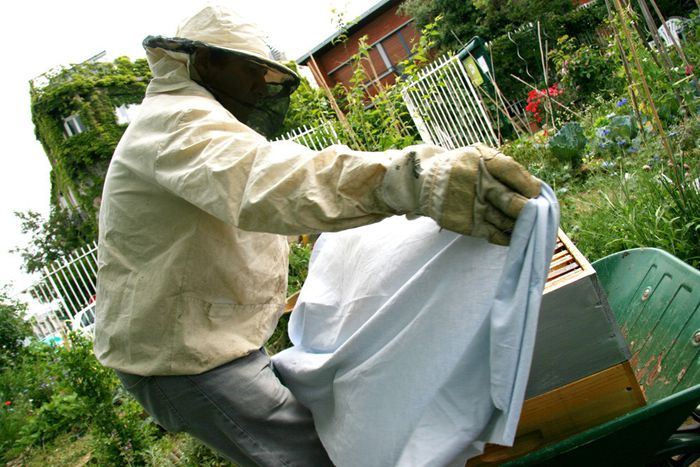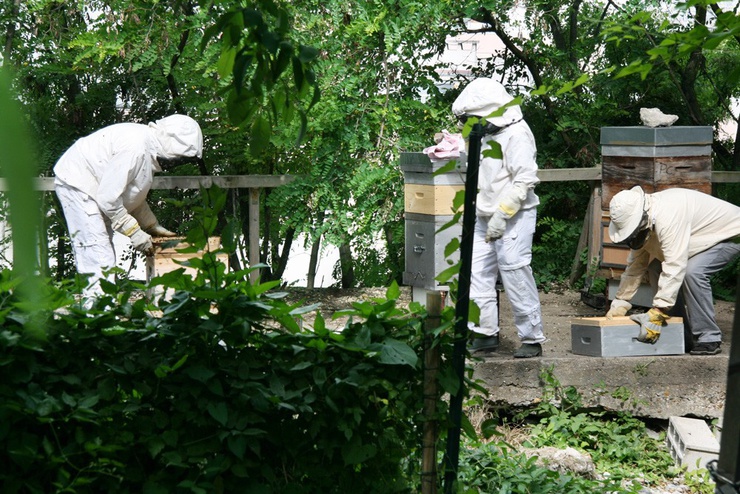
The life of a busy urban bee on a Parisian roof
Published on
Translation by:
Cafebabel ENG (NS)From the roofs of the Opera Garnier to the gardens of Luxembourg, it’s easy to find honeycombs and beehives in Paris. The French capital’s honey taste better and is healthier than the honey from the countryside, which is infected by the pesticides used upon it. Citizens came together to maintain the urban biodiversity
The national biodiversity strategy (Strategia Nazionale della biodiversità, SNB) was created in France on 9 May 2011. It disappointed many because of its lack of defined objectives, clear figures and actions aimed at halting the extinction of animal and vegetal species. The French government asked various local collectives, trade unions, companies and associations to do something which differend from the citizen plan for the preservation of biodiversity in 2010. It invited Parisians to become active observers of urban flora and fauna. Everyone except the farmers responded to the call for volunteers. The farmers themselves should present themselves, as the real economic interests could be directly affected by the new rules of this strategy.

There where the bees lie
The SNB action plan is all very well but now relies on the good will of volunteer ordinary citizens rather than dealing with the ambitions and means of having a choice and a clearly defined political strategy. Ambition runs high in the city, and one of those is having the best honey in France. Between two and three hundred hives can be found in locations such as the Opera Garnier, Monceau park in the north-west of the capital and in the Georges Brassens gardens. Every association and person implicated in urban apiculture fosters a better environment for the bees, who can find each other easier tan in the countryside, where the use of monoculture, pesticides and the introduction of GMOs (genetically modified organisms) threatens thir lives; they are already on a decline. George, a beekeeper in a neighbourhood association in Butte Bergeyre, in the nineteenth district of north-eastern Paris, explains that there are two rules to respect. ‘Beehives cannot be situated 23 metres from a hospital or school. They have to be protected by a fence which is at least two metres higher than the hive.’

Bees play a vital role in the maintenance of biodiversity, according to the latest data from INRA (French national institute for agricultural research). 35% of our alimentation and 65% of its diversity depend on bee pollination. Acacia, chestnut and hydrangea are the types of honey most produced in Paris. Thanks to the attention given to the biodiversity of plants and flowers in the Parisian ‘meadows’, the honey is enriched with multiple aromas.
 ‘Good evening. There are bees in the honeycombs who are contaminated by a chemical product which was put in the flowers or in the water. Help us to find the reason for this so we can find a solution as son as possible. Thanks for your visit. Catherine and George, the beekeepers.’ That;s what the sign reads over the garden managed by the Butte Bergeyre. With very few beehives they manage to produce 200kg of honey. ‘In our first year we only had too hives producing 40kg of honey,’ remembers George. You too can taste the honey of the urban beekeepers during the honey festival in the first week of October.
‘Good evening. There are bees in the honeycombs who are contaminated by a chemical product which was put in the flowers or in the water. Help us to find the reason for this so we can find a solution as son as possible. Thanks for your visit. Catherine and George, the beekeepers.’ That;s what the sign reads over the garden managed by the Butte Bergeyre. With very few beehives they manage to produce 200kg of honey. ‘In our first year we only had too hives producing 40kg of honey,’ remembers George. You too can taste the honey of the urban beekeepers during the honey festival in the first week of October.
This article is part of cafebabel.com’s 2010-2011 feature focus on Green Europe; read the full set of city special editions
All images: © Greta Gandini
Translated from Le api parigine, piccolo miracolo urbano



